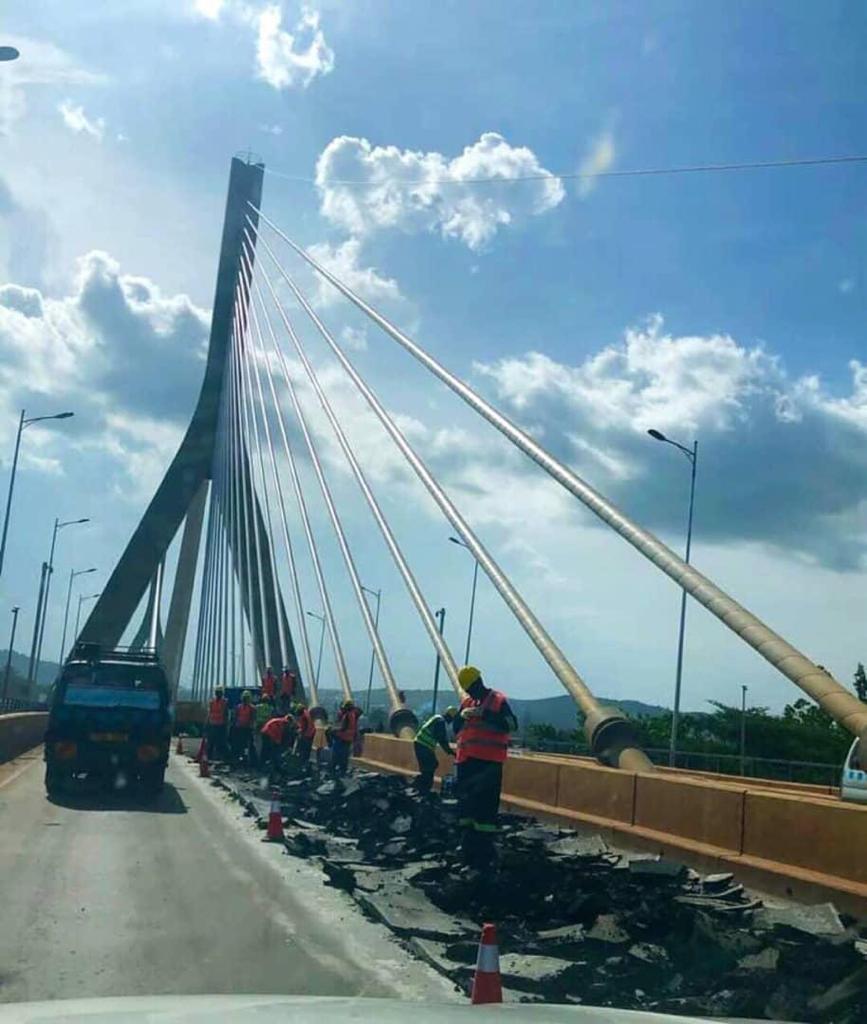The Uganda National Roads Authority (UNRA) through the communications manager Allan Sempebwa had earlier refuted public claims that the new Nile Bridge was already cracking explaining that the cracked road area was just a test on the materials that were used by the contractors to find out what was essential and long lasting.
Sempebwa had said that the wearing course seen and referred to as bumpy or cracked by a section of the public is non structural and therefore not a defect on the bridge. Additional information from UNRA also stated that soon after the tests are done, the asphalt layer that they had used will be replaced permanently.
There was a lot of pressure from the members of the public expressing their disappointment in the authority for doing shoddy work. Some people came out to show how they were used to the government providing inconsequential services.
Eventually, UNRA executive Director Allen Kagina with a team of engineers paid a visit to the bridge for thorough inspection. After the inspection, it was found out that the reason for the surface cracks was the “ Poor bonding between water proofing material and AC14” this was indicated in the statement Kagina issued out after inspection.
TrumpetNews had earlier interviewed engineers who had explained that asphalt and the concrete can’t bond because the two materials expand and contract at different intervals.
“Therefore, to get asphalt and fix it on concrete was a complete waste of time,” an engineer stated.
While on the site, engineers explain to Kagina that water proofing material was introduced between the surface of the concrete deck and the asphalt during the design state.
Sikalastic- 822 water proofing material was applied on the bridge deck and to facilitate bonding between Sikalastic 822 and Asphalt, sikalastic 823 tack coats was applied. Sikalastic 822 is a 2 part elastic crack bridging hand applied polyurethane membrane.
Which is used as a water proofing membrane underneath hot poured asphalt on a bridge or car park decks. It serves as a water proofing membrane for other concrete structures
Kagina was further informed that before the application of ac14 asphalt, the water proofing company informed the contractor that their material only bond with mastic asphalt not AC14 asphalt .
Mastic asphalt consists of a gading limestone aggregate bound together with asphalt cement and heated to 210 degrees c and applied by qualified installers with a wooden float.
Kagina was also told that the trials were done on September 21, 2018 with 32 tonne trucks and the subcontractor Chinese firm CICO wrote to the main contractor Zenitaka corporation company which gave them a go ahead to use the materials(asphalt) available as they monitor the result.
Shortly after the bridge was open to traffic, there were cracks as the contractors went on to monitor. Both laboratory and in situ tests were done and the findings were showed that there was poor bonding between water proofing material and asphalt AC14.
Engineers concluded that a method statement to replace AC14 asphalt with modified polymer asphalt has been submitted.
(Additional reporting by Chimpreports)




